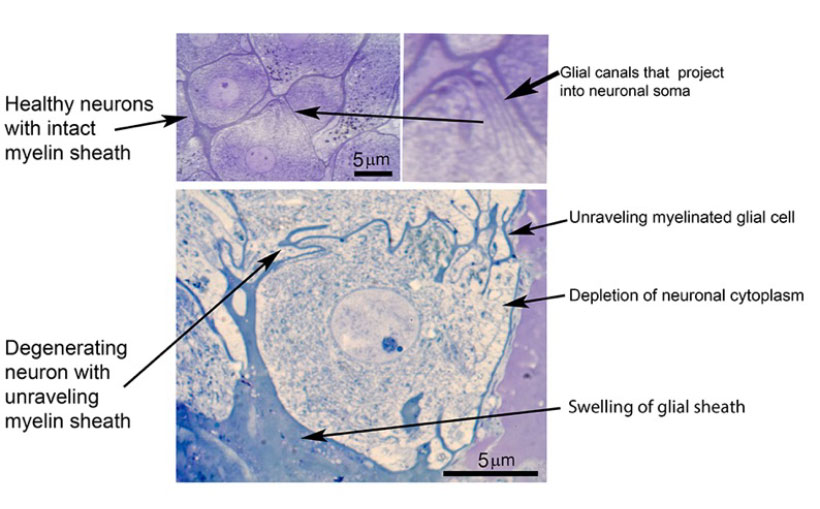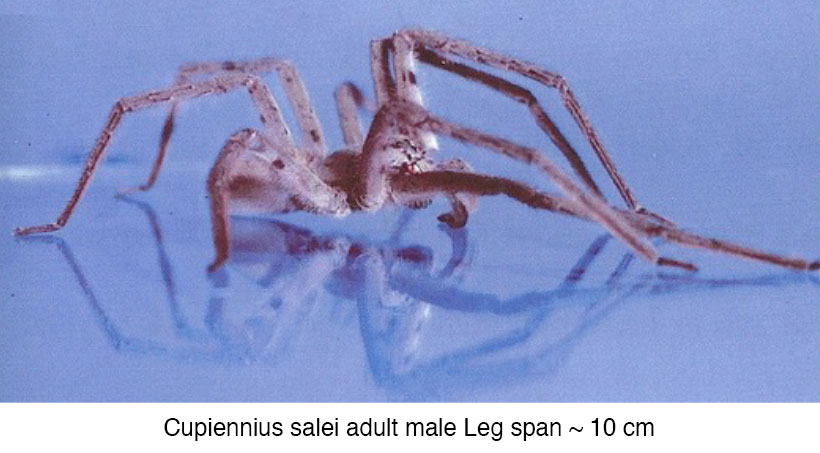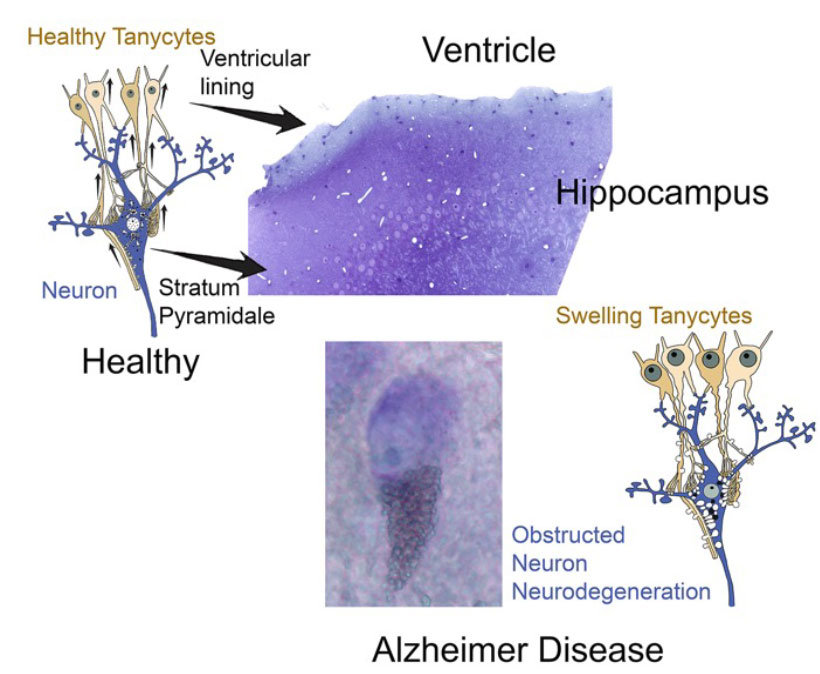Ruth Fabian-Fine Director of the Neuroscience Program, Professor of Biology and Neuroscience

Bio
M.Sc., Zoology/Neurobiology, Johann Wolfgang Goethe-University Frankfurt
Ph.D., Zoology/Neurobiology, Johann Wolfgang Goethe-University Frankfurt
Areas of Expertise:
Cellular/Molecular Neuroscience
Neurodegeneration
Cellular Mechanisms of Alzheimer Disease
Mechanosensory Systems in Spiders
Synaptic Networks
Ultrastructure of the Nervous System
Electron Microscopy, Confocal Microscopy
Courses I Teach:
Developmental Biology Lecture/Lab
Cellular/Molecular Neuroscience Lecture/Lab
Toxicology Lecture/Lab
Senior Seminar
Biological Communications
Cellular/Molecular Research
Director:
Scientific Imaging Suite
Current Research
Fabian-Fine/ Weaver Lab Cellular Molecular Neuroscience
Research Program
Investigation of cellular processes that cause neurodegeneration in spider, rodent and human brain with focus on Alzheimer Disease
According to current estimates, worldwide over 50 million people are affected by irreversible progressive neurodegenerative diseases that end in death of affected individuals. One of the most prevalent forms of neurodegeneration is Alzheimer Disease (AD) that affected roughly 6.9 million USA citizens over the age of 65 in 2024, thus ranking within the leading causes of death. Despite massive international research efforts, the underlying causes for AD remain elusive.
Over the past several decades, the ‘amyloid hypothesis’ has been the prevalent proposition regarding the underlying causes of AD. This theory postulates that the presence of abnormal, neurotoxic ‘amyloid beta (Aβ) plaques’ and ‘neurofibrillary tau tangles’ in the brain of AD decedents may be the result of failed waste removal from the brain explaining the detrimental formation of plaques and tangles. As a result of this prevailing theory, drugs are often designed to clear Aβ and hyperphosphorylated tau protein from the brain using monoclonal antibodies. However, these approaches have repeatedly failed in clinical trials. In addition to the suffering experienced by affected individuals and their families, the monetary implications of these failed drug trials are staggering. Together with an estimated annual cost exceeding US$ 300 billion in medical and healthcare-related expenses, these numbers highlight the paramount importance to re-evaluate past and current research findings and therapeutic approaches.
Why have we been unable to illuminate the underlying causes for neurodegeneration despite (i) massive international research undertakings, (ii) advanced scientific knowledge, and (iii) increasingly sophisticated biomedical technologies?
We address this question through investigation of the progressive nature of neurodegeneration in both invertebrate and mammalian brain.
Initially investigating cellular processes of neurodegeneration in the Central American Wandering Spider Cupiennius salei we discovered that neurodegeneration is triggered by the unraveling of myelinated glial cells. Due to the large size of neurons in the spider brain we were able to identify a novel glial-canal system that utilizes myelin canals to remove cellular waste from neurons. It is this canal system that unravels in the spider nervous system and leads to the depletion of associated neurons.
(Please click images for full view)
For more information please visit
Myelinated Glial Cells: Their Proposed Role in Waste Clearance and Neurodegeneration in Arachnid and Human Brain
Alzheimer Disease: The proposed role of tanycytes in the formation of tau tangles and amyloid beta plaques in human brain
Contact information:
Ruth Fabian-Fine Ph.D
Professor of Biology and Neuroscience
rfabianfine@smcvt.edu
Office: 1 802 654 2827
Adam Weaver Ph.D.
Associate Professor of Biology and Neuroscience
Aweaver2@smcvt.edu
Office: 1 802 654-2624
Awards & Recognition
Vermont Genetics Network Pilot Award 2019/2020
Vermont Genetics Network Small Project Award 2018/2019
Vermont Genetics Network Pilot Award, 2017/18
Vermont Genetics Network Small Project Award 2018
Vermont Genetics Network Pilot Award, 2016/17
George I. Alden Trust, awarded to Saint Michael’s College, 2016
Saint Michael’s College Summer Research Award, 2016
Vermont Genetics Network Small Project Award, 2015
Killiam Postdoctoral Fellowship, Dalhousie University, Halifax, Canada, 2001
Interview
Dr. Ruth Fabian-Fine spoke with the Defender, the Saint Michael’s College newspaper, on examining sensory overload, or over stimulation of sensory systems and how it affects the central nervous system and the behavior of Central American Hunting Spiders.
Click here to watch the interview: Examining the sensory systems in spiders
Publications
Selected peer-reviewed articles:
Senior, E. E., Poulin, H. E., Dobecki, M. G., Anair, B. M., & Fabian-Fine, R. (2020). Co-expression of the neuropeptide proctolin and glutamate in the central nervous system, along mechanosensory neurons and leg muscle in Cupiennius salei. Cell and tissue research, 1-12.
Tarr EA, Fidler BM, Anderson CM, Jager AK, Gallagher NM, Carroll KP Fabian-Fine R (2018) Distribution of FMRFamide-related peptides and co-localization with glutamate in Cupiennius salei, an invertebrate model system Cell Tissue Res doi: 10.1007/s00441-018-2949-0
Fabian-Fine R, Anderson C, Roush M, Johnson JAG, Liu H, French AS and Torkkeli P. Distribution of Cholinergic Neurons and their Co-localization with FMRFamide in Central and Peripheral Neurons of the Spider Cupiennius salei. Cell Tissue Res. 2017 Jul 7. doi: 10.1007/s00441-017-2652-6
Fabian-Fine R, Meisner S, Torkkeli PH, Meinertzhagen IA. Co-localization of Gamma-Aminobutyric Acid and Glutamate in Neurons of the Spider Central Nervous System.
Fabian-Fine R, Meisner S, Torkkeli PH, Meinertzhagen IA. Cell Tissue Res. 2015 Dec;362(3):461-79
Grange J, Boyer V, Fabian-Fine R, Fredj NB, Sadoul R, Goldberg Y. Somatodendritic localization and mRNA association of the splicing regulatory protein Sam68 in the hippocampus and cortex. J Neurosci Res. 2004 Mar 1;75(5):654-66.
Ruiz A, Walker MC, Fabian-Fine R, Kullmann DM. Endogenous zinc inhibits GABA(A) receptors in a hippocampal pathway. J Neurophysiol. 2004 Feb;91(2):1091-6.
Chandler KE, Princivalle AP, Fabian-Fine R, Bowery NG, Kullmann DM, Walker MC.
Plasticity of GABA(B) receptor-mediated heterosynaptic interactions at mossy fibers after status epilepticus. J Neurosci. 2003 Dec 10;23(36):11382-91.
Fabian-Fine R, Verstreken P, Hiesinger PR, Horne JA, Kostyleva R, Zhou Y, Bellen HJ, Meinertzhagen IA. Endophilin promotes a late step in endocytosis at glial invaginations in Drosophila photoreceptor terminals. J Neurosci. 2003 Nov 19;23(33):10732-44.
Ruiz A, Fabian-Fine R, Scott R, Walker MC, Rusakov DA, Kullmann DM. GABAA receptors at hippocampal mossy fibers. Neuron. 2003 Sep 11;39(6):961-73.
Pennetta G, Hiesinger PR, Fabian-Fine R, Meinertzhagen IA, Bellen HJ. Drosophila VAP-33A directs bouton formation at neuromuscular junctions in a dosage-dependent manner. Neuron. 2002 Jul 18;35(2):291-306.
Fabian-Fine R, Seyfarth E-A, Meinertzhagen IA. (2002) Peripheral synaptic contacts as sensory neurons in arachnids and crustaceans: Morphological and immunocytochemical characteristics. Microscopy Research and Technique 58:283-298.
Fabian-Fine R, Skehel P, Errington ML, Davies HA, Sher E, Stewart MG, Fine A (2001) Ultrastructural distribution of the nicotinic acetylcholine receptor subunit
7 in rat hippocampus. J Neurosci 21: 7993-8003.
Recent News
Adam Weaver and Ruth Fabian-Fine of the biology/neuroscience faculty alongside eight of their well-prepared student researchers presented a program this past fall semester 2022 in the McCarthy Recital Hall, first in an exciting new “Solutions for Social Impact” series at the College, about “Shedding Light on Neurodegenerative Diseases for non-scientists.”
(posted February 2023)
Ruth Fabian-Fine of the biology/neuroscience faculty was awarded the major faculty award for scholarship & artistic achievement during the Academic Convocation in September. Also, Ruth with her colleague Adam Weaver was co-author along with 26 Saint Michel’s student researchers of a publisher paper for a respected science journal, the Journal of Comparative Neurology, on the topic of neurodegeneration. The professors and some of the students also presented the same findings during one of the Fall Semester Seminars for Social Impact in McCarthy Recital Hall.
(posted February 2023)
Ruth Fabian-Fine of the biology faculty along with biology colleague Declan McCabe started assigning podcasts in their Biological Communications courses in 2020. A couple of Ruth’s students, Cecelia Schmelzle ’23 and Cailey Comiskey ’23, really ran with it, and in their second “season” (which is to say, semester), they launched weekly interviews with a range of STEM (an acronym standing for Science, Technology, Engineering, Math) majors and others with interests in STEM. Declan says the podcast is on Spotify for subscriptions. Both students earn internship credit for the podcast in their senior year and hope to recruit successors to keep it going.
(posted February 2022)
Ruth Fabian-Fine of the biology/neuroscience faculty and Anne Crowley, the College’s instructional technologist, this spring assures that Saint Michael’s students would have a chance to be part of a sort of Academic Symposium, as has been traditional in recent years, despite COVID — though in a virtual world of live Zoom or pre-recorded presentations. Also, the Saint Michael’s College Student-Athlete Advisory Committee (SAAC) announced in April that Ruth has earned its 2021 Dr. Dave Landers Faculty Mentor Award thanks to her support and dedication to the College’s student-athletes, placing her in considered for the Northeast-10 Conference Dr. Dave Landers Faculty Mentor Award.
(posted July 2021)
Ruth Fabian-Fine, professor of biology, with her research students, recently had another paper accepted for publication in a Springer Publishing Group Journal called Cell and Tissue Research. Their paper was titled “Distribution of the neuroactive peptide proctolin and co-localization with glutamate in the nervous system of Cupiennius salei,” and the student-researcher co-authors with Ruth were Elizabeth Senior, Hailee Poulin, Madison Dobecki and Bradley Anair.
(posted June 2020)
Ruth Fabian-Fine, assistant professor of biology and neuroscience, Adam Weaver, associate professor of biology and neuroscience, and Melissa VanderKaay Tomasulo, associate professor of psychology and director of the Neuroscience Program, joined Saint Michael’s neuroscience and biology majors in presenting a variety of neuroscience topics at Burlington High School this past Saturday, October 20, for students from Burlington, South Burlington, Rice, Milton and Essex High Schools.
(posted January 2019)
Ruth Fabian-Fine assistant professor of biology and neuroscience, and Will Mentor, associate professor of fine arts/art, co-curated an exhibition in the McCarthy Arts Center Gallery titled “Enhanced Vision: Artful Science from September 7 through October 13. This exhibition featured the often inaccessible aesthetic beauty of the natural world revealed through scientific research. It covers a broad spectrum from nature photography to the visualization of single molecules using modern research technology.
(Posted December 2017)
Ruth Fabian Fine, assistant professor of biology and neuroscience, recently was the recipient of a $25,000 Vermont Genetics Network (VGN) Pilot grant award; also, in recent months she helped set up and coordinate, with colleague Christina Chant, a new Scientific Imaging Facility on campus; Ruth also saw publication of a peer-reviewed paper with undergraduate student authors in the journal Cell and Tissue Research, titled “The Distribution of Cholinergic Neurons, and their Co-localization with FMRFamide in Central and Peripheral Neurons of the Spider Cupiennius salei (Ruth Fabian-Fine, Carly M. Anderson, Molly A. Roush, Jessica A.G. Johnson, Hongxia Liu, Andrew S. French and Päivi H. Torkkeli); she developed an outreach program in collaboration with Joan Wagner (director of community-engaged learning/coordinator of experiential learning), Rice High School and her Senior Seminar students to present for high school students on the cellular actions of venoms and toxins on the human body. During summer 2017 she is conducting summer research with five undergraduate students on campus.
(Posted 2017)



